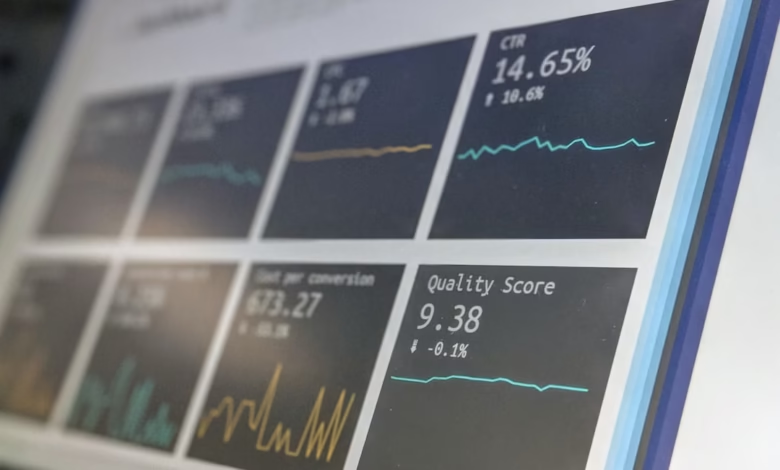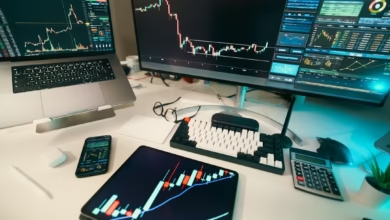Mastering Technical Analysis: Essential Tools and Strategies for Effective Trading in Forex, Stocks, and Beyond

In the fast-paced world of trading, whether in stock trading, forex trading, or crypto trading, the ability to accurately forecast market movements is essential for success. Technical analysis, which involves using charts and patterns to interpret price action and market trends, has emerged as a crucial tool for traders aiming to make informed decisions. By understanding and implementing various technical indicators, traders can enhance their market analysis and develop robust trading strategies across multiple forms of trading, including options trading, futures trading, and derivatives trading.
This article will delve into the essentials of technical analysis, providing insights into the key tools used in forex and stock trading. We will explore how to identify market patterns that are vital for day trading and swing trading, while also discussing the integration of technical and fundamental analysis for a comprehensive approach to trading. Whether you are engaged in high-frequency trading, scalping, or social trading, mastering technical analysis can significantly improve your trading psychology and risk management skills. Join us as we uncover the strategies and indicators that can help you navigate the complexities of the market with confidence.
- 1. Essential Tools for Technical Analysis in Forex and Stock Trading
- 2. Understanding Market Patterns: Key Indicators for Day Trading and Swing Trading
- 3. Integrating Technical and Fundamental Analysis for Effective Trading Strategies
1. Essential Tools for Technical Analysis in Forex and Stock Trading
When engaging in technical analysis for forex and stock trading, several essential tools can significantly enhance your market forecasts. These tools help traders identify price trends, patterns, and potential reversal points, ultimately refining their trading strategies. Below are some of the key tools used in various forms of trading, including options trading, futures trading, and even crypto trading.
1. **Charting Software**: The backbone of technical analysis, charting software allows traders to visualize price movements over different time frames. Popular platforms like MetaTrader and TradingView offer a range of chart types—such as candlestick, line, and bar charts—enabling traders to conduct detailed market analysis.
2. **Technical Indicators**: These mathematical calculations based on price and volume data help traders analyze market trends. Common indicators include Moving Averages, Relative Strength Index (RSI), Bollinger Bands, and MACD. Each serves a unique purpose, from measuring momentum to identifying overbought or oversold conditions, essential for day trading and swing trading strategies.
3. **Trend Lines and Channels**: Drawing trend lines helps traders visualize the direction of the market, while channels highlight potential support and resistance levels. These tools are crucial for scalping and high-frequency trading, where quick decisions must be made based on price action.
4. **Volume Analysis Tools**: Understanding trading volume is vital for confirming trends and reversals. Volume indicators, such as the On-Balance Volume (OBV) and Volume Weighted Average Price (VWAP), assist traders in gauging buying or selling pressure, which is especially useful in derivatives trading and commodities trading.
5. **Pattern Recognition Software**: Advanced tools that can automatically identify chart patterns—such as head and shoulders, triangles, and flags—streamline the analysis process. This software can be beneficial for algorithmic trading and copy trading, where traders rely on automated strategies based on identified patterns.
6. **Backtesting Tools**: Backtesting allows traders to test their strategies using historical data to evaluate their effectiveness. Many online trading platforms provide backtesting features, helping traders refine their strategies in futures trading, options trading, and more.
7. **Risk Management Tools**: Effective risk management is crucial in trading. Tools like stop-loss orders and position sizing calculators help traders protect their capital, making them indispensable for all trading approaches, including margin trading and leverage trading.
Incorporating these essential tools into your technical analysis can significantly enhance your trading performance across various markets, whether you are involved in index trading, energy trading, or binary options. By combining these tools with solid trading psychology and fundamental analysis, traders can develop comprehensive trading strategies that navigate market fluctuations effectively.
2. Understanding Market Patterns: Key Indicators for Day Trading and Swing Trading
Understanding market patterns is crucial for traders engaged in various forms of trading, including day trading, swing trading, and even longer-term strategies. By recognizing key indicators, traders can make informed decisions that enhance their potential for profitable trades.
One of the fundamental aspects of technical analysis is identifying chart patterns, which can signal future price movements. Common patterns include head and shoulders, double tops and bottoms, flags, and triangles. Each of these formations provides insights into market sentiment and potential reversals or continuations in trends.
For day trading, quick decision-making is essential. Traders often rely on short-term patterns and indicators such as moving averages and the Relative Strength Index (RSI) to capitalize on fleeting opportunities. For instance, a bullish flag pattern may indicate a continuation of upward momentum, prompting traders to enter positions before a breakout.
In swing trading, traders typically hold positions for several days or weeks, making it important to focus on slightly longer-term patterns. Moving averages, Fibonacci retracements, and trend lines can aid in identifying entry and exit points. A swing trader might use a combination of technical analysis and fundamental analysis to assess market conditions and gauge the potential for price movements in stock trading, forex trading, or commodities trading.
Another critical factor is risk management, which should be integrated into any trading strategy. By utilizing stop-loss orders and proper position sizing, traders can safeguard their capital against unfavorable market movements, whether in options trading, futures trading, or crypto trading.
Moreover, understanding trading psychology is vital. Emotional discipline can influence trading decisions, making it important for traders to remain objective when analyzing charts and patterns. This is especially true in high-frequency trading or algorithmic trading, where quick reactions to market changes are necessary.
In summary, recognizing and understanding market patterns is key to successful trading across various markets, including index trading, derivatives trading, and energy trading. By employing effective trading strategies and integrating technical analysis with sound risk management and trading psychology, traders can enhance their chances of success in the competitive landscape of online trading platforms.
3. Integrating Technical and Fundamental Analysis for Effective Trading Strategies
Integrating technical and fundamental analysis is essential for developing effective trading strategies across various markets, including stock trading, forex trading, and crypto trading. While technical analysis focuses on price movement and chart patterns, fundamental analysis examines the underlying economic factors that influence market trends. By combining these two approaches, traders can enhance their market analysis and improve their decision-making process.
One of the key advantages of integrating both analyses is the ability to validate trading signals. For instance, if a trader identifies a bullish chart pattern through technical analysis, they can strengthen their conviction by checking relevant fundamental indicators, such as earnings reports for stocks or economic data releases for forex trading. This multifaceted approach helps in minimizing risks associated with speculative trading and enhances the effectiveness of risk management strategies.
Moreover, understanding trading psychology is crucial when combining these analyses. Traders often face emotional challenges during market fluctuations. By relying on technical analysis for entry and exit points while grounding their decisions in fundamental data, traders can maintain a disciplined approach, reducing the likelihood of impulsive decisions that could lead to losses in derivatives trading or margin trading scenarios.
In practical applications, this integration can be particularly beneficial in day trading and swing trading. For example, a trader may use technical indicators like moving averages or Relative Strength Index (RSI) to identify potential entry points while simultaneously monitoring news events that could impact market sentiment. This dual perspective is also valuable in high-frequency trading or algorithmic trading, where quick decisions are paramount.
In conclusion, integrating technical and fundamental analysis allows traders to develop comprehensive trading strategies that leverage the strengths of both methods. Whether in options trading, commodities trading, or index trading, this holistic approach equips traders with a broader understanding of market dynamics, ultimately leading to more informed and successful trading outcomes.
In conclusion, mastering technical analysis is a crucial step for anyone looking to excel in various trading markets, whether it be stock trading, forex trading, or crypto trading. By utilizing essential tools and understanding market patterns through key indicators, traders can significantly enhance their decision-making process in day trading and swing trading. Moreover, integrating technical analysis with fundamental analysis allows for more comprehensive trading strategies, ensuring that traders are well-equipped to navigate the complexities of the market.
As you embark on your trading journey, remember that effective risk management and an understanding of trading psychology are vital for success in any trading environment, be it futures trading, options trading, or commodities trading. Whether you are engaging in algorithmic trading, high-frequency trading, or social trading, the ability to analyze market movements through charts and patterns can provide you with a competitive edge.
Stay informed about the latest trends and developments in the trading world, and continually refine your trading strategies to adapt to changing market conditions. By combining the insights gained from technical analysis with the principles of leverage trading and margin trading, you will be better positioned to achieve your trading goals, whether in index trading, CFD trading, or even binary options trading. Embrace the journey of learning and growth in the diverse landscape of online trading platforms and remember that every trader can benefit from a solid foundation in technical analysis.
References:
(Include your references here)





